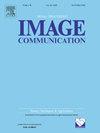基于混合特征提取和知识蒸馏的人体活动识别深度学习模型
IF 2.7
3区 工程技术
Q2 ENGINEERING, ELECTRICAL & ELECTRONIC
引用次数: 0
摘要
本文介绍了生成对抗网络(GAN)框架模型,该模型使用离线知识蒸馏(KD)将空间深度数据从大型教师模型移动到较小的学生模型。为了实现这一点,使用了名为effentnetb7的教师模型,该模型嵌入了空间注意(E2SA)和多层门控循环单元(GRU)。在预测过程之前,采用了一种称为完全混合局部二值模式(ChLBP)的混合特征提取方法。特征提取后,混合特征并行输入到教师模型和学生模型中。在教师模型中,E2SA提取深度和空间注意力活动特征,然后将这些特征输入到多层GRU中,GRU从整体上学习人类活动框架序列。该模型在UCF101数据集上的识别准确率为98.50%,在HMDB51数据集上的识别准确率为79.21%,明显优于现有模型。本文章由计算机程序翻译,如有差异,请以英文原文为准。
Hybrid Feature Extraction and Knowledge Distillation Based Deep Learning Model for Human Activity Recognition System
This article introduces the Generative Adversarial Network (GAN) framework model, which uses offline knowledge distillation (KD) to move spatio-deep data from a large teacher to a smaller student model. To achieve this, the teacher model named EfficientNetB7 embedded with spatial attention (E2SA) and a multi-layer Gated Recurrent Unit (GRU) is used. A hybrid feature extraction method known as Completed Hybrid Local Binary Pattern (ChLBP) is employed prior to the prediction process. After feature extraction, the hybrid features are parallelly given as input to both teacher and student models. In the teacher model, E2SA extracts both deep and spatio attention activity features, and these features are then input to the multi-layer GRU, which learns the human activity frame sequences overall. The proposed model obtains 98.50 % recognition accuracy on the UCF101 dataset and 79.21 % recognition accuracy on the HMDB51 dataset, which is considerably better than the existing models.
求助全文
通过发布文献求助,成功后即可免费获取论文全文。
去求助
来源期刊

Signal Processing-Image Communication
工程技术-工程:电子与电气
CiteScore
8.40
自引率
2.90%
发文量
138
审稿时长
5.2 months
期刊介绍:
Signal Processing: Image Communication is an international journal for the development of the theory and practice of image communication. Its primary objectives are the following:
To present a forum for the advancement of theory and practice of image communication.
To stimulate cross-fertilization between areas similar in nature which have traditionally been separated, for example, various aspects of visual communications and information systems.
To contribute to a rapid information exchange between the industrial and academic environments.
The editorial policy and the technical content of the journal are the responsibility of the Editor-in-Chief, the Area Editors and the Advisory Editors. The Journal is self-supporting from subscription income and contains a minimum amount of advertisements. Advertisements are subject to the prior approval of the Editor-in-Chief. The journal welcomes contributions from every country in the world.
Signal Processing: Image Communication publishes articles relating to aspects of the design, implementation and use of image communication systems. The journal features original research work, tutorial and review articles, and accounts of practical developments.
Subjects of interest include image/video coding, 3D video representations and compression, 3D graphics and animation compression, HDTV and 3DTV systems, video adaptation, video over IP, peer-to-peer video networking, interactive visual communication, multi-user video conferencing, wireless video broadcasting and communication, visual surveillance, 2D and 3D image/video quality measures, pre/post processing, video restoration and super-resolution, multi-camera video analysis, motion analysis, content-based image/video indexing and retrieval, face and gesture processing, video synthesis, 2D and 3D image/video acquisition and display technologies, architectures for image/video processing and communication.
 求助内容:
求助内容: 应助结果提醒方式:
应助结果提醒方式:


